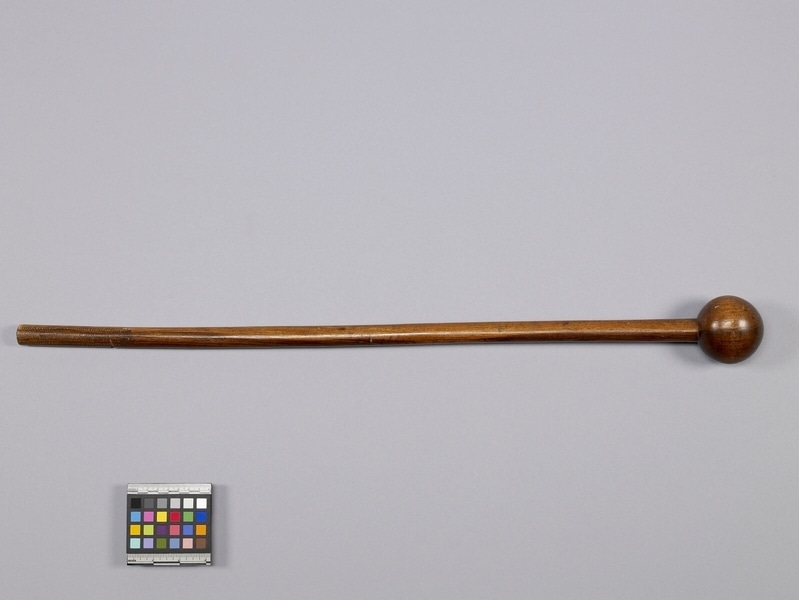Club Item Number: K4.217 from the MOA: University of British Columbia

Description
Club carved from one piece of wood with a cylindrical shaft and a bulbous end. Lengthwise zigzag lines are incised at the end of the shaft.
History Of Use
These carved clubs (known as isiGila, Molamu, Thoka, Tinhonga, Nduku in Zulu, Maasai, Sotho, Tsonga, and Ndoni) are common in several communities throughout south and east Africa. The shape can be found in rock paintings in Lesotho, from approximately 200-300 years old. They have a wide variety of traditional uses: they can be used as a throwing club for hunting, or for self-defence. Their primary purpose, however, is ceremonial; they are used in ritual and cultural events. These clubs were restricted and banned at various points under colonial regimes but have persisted as a cultural symbol into the modern era. Many of these clubs, now displayed in museums, were originally made to be sold to British tourists and can be recognized by physical features like metal additions, though this one does not have those characteristics.
Iconographic Meaning
Traditionally, these types of clubs represent masculinity. In Tsonga culture, they are used in the ritual Muchongolo dance, where they represent masculinity through their phallic shape. In Shona culture, where homosexuality has been historically viewed negatively, the word "tsvimbourne" is used as a derogatory term, meaning "one who does not possess a club."
Item History
- Made in Southern Africa, Africa ?
- Received from Unknown (Unknown)
What
Where
- Holding Institution
- MOA: University of British Columbia
- Made in
- Southern Africa, Africa ?
Other
- Condition
- good